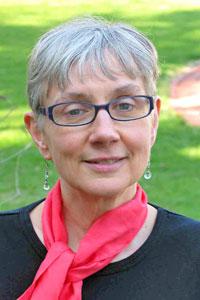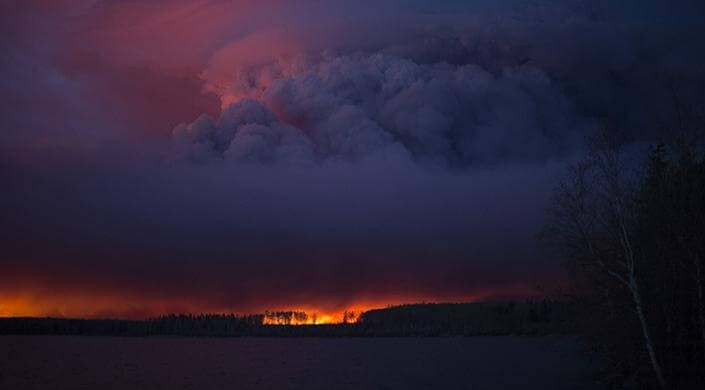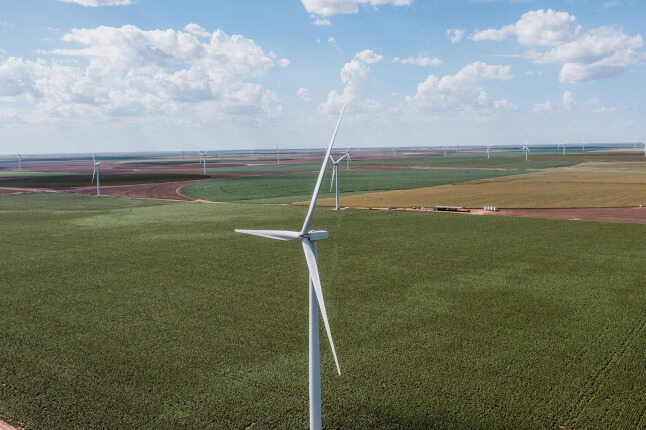News
A massive wildfire rages Wednesday evening, May 4, 2016, near Anzac, Alberta, a hamlet 48 km southwest of Fort McMurray. The community and surrounding area was evacuated. A state of emergency exists in the Regional Municipality of Wood Buffalo as a result of wildfires. (photograph by Chris Schwarz/Government of Alberta)
For more than a month, dozens of wildfires have ravaged northern Alberta, Canada. The largest, nicknamed The Beast, destroyed 1.4 million acres, thousands of homes and — once extinguished — will likely be the costliest natural disaster in Canada’s history.
But as the planet warms and patterns of rainfall change, these so-called super fires are likely to get worse, at least in some regions.
In 2015, researchers from the Harvard John A. Paulson School of Engineering and Applied Sciences (SEAS) published a paper predicting a dramatic increase in wildfire activity in the Alaskan and Canadian forest by the middle of the century. One of the regions identified as particularly high risk was the area surrounding Fort McMurray, Alberta, which bore the brunt of The Beast’s damage this year.
 We spoke with Loretta J. Mickley, Senior Research Fellow at SEAS, who co-wrote the paper with former postdoctoral fellow Xu Yue, about the recent fires and what we can expect in the coming decades.
We spoke with Loretta J. Mickley, Senior Research Fellow at SEAS, who co-wrote the paper with former postdoctoral fellow Xu Yue, about the recent fires and what we can expect in the coming decades.
Last year, you and your colleagues published a paper predicting that area burned by wildfires in western Canada and Alaska could increase by 130 to 350 percent by 2051. Having seen the destruction from this year’s fire season in Alberta, that’s a scary thought. Why is this region at such a high risk for increasing wildfire activity in the next coming decades?
Large fires are already common in northern Alberta, where this year’s fire is raging. Summers are hot here, and the high temperatures dry out vegetation and give ample fuel for fires to spread. We find that climate change will increase the summer temperatures in this region by about 2 °C (4 °F) by the 2050s, and that these high temperatures could drive still greater fire activity.
How did you come to this prediction?
Other groups have predicted wildfire activity in the future, with widely divergent results. For our study, we first looked at the past. We analyzed observed fire activity and quantified the relationships between area burned and meteorological variables like temperature and relative humidity. This relationship varies quite a lot across different ecosystems. Next we applied these relationships to weather projections from a large ensemble of climate models. Some models show greater changes in climate than others, so this step yielded a range of possible future fire activity. Having a range of possible outcomes gave us confidence in identifying those places most likely to have increased fires in the future.
What other areas have increased risk for fires in the future?
We find that fire activity will likely increase across much of western North America by the 2050s: Alaska, western Canada, the Rocky Mountains, the Southwest states, and southwestern California. Rising surface temperatures are responsible for much of these projected increases.
The immediate impact of these fires is on the ground, but fires also affect air quality. How far does that impact reach?
Smoke plumes from fires can travel long distances, degrading air quality many hundreds of miles away. The plumes carry tiny particles and ozone, both of which are harmful to human health. The Fort McMurray fires, for example, affected air quality across much of the Great Lakes region and the northern Great Plains.
The fires in Alberta have burnt more than 1 million acres. Will fires of this size and severity be common by midcentury? Will they get worse?
Our work shows that large wildfires will become more common by the 2050s. No matter what ignites a wildfire – lightning or human carelessness – the spread of a fire is determined by the availability of dry, easily combustible fuel. Warmer temperatures increase the supply of such fuel to feed the fire. At Fort McMurray, record-setting high temperatures this spring set the stage for the massive fire. The Fort McMurray fire is an indication of what’s likely in store in future decades.
Topics: Climate
Cutting-edge science delivered direct to your inbox.
Join the Harvard SEAS mailing list.
Scientist Profiles
Loretta J. Mickley
Senior Research Fellow in Chemistry-Climate Interactions
Press Contact
Leah Burrows | 617-496-1351 | lburrows@seas.harvard.edu




